Diné photographer Will Wilson (b. 1969) presents an authentic, contemporary depiction of Indigenous culture, using historical photographic techniques, in a comparative dialog with the work of Edward Sheriff Curtis (1868-1952).
Curtis holds an enduring place the history of photography as a result of his life’s work, the 20-volume The North American Indian. Between 1900 and 1930 traveled throughout the United States chronicling the customs and daily lives of seventy Native American tribes. Given the not-long-past hostilities toward the indigenous population, Curtis thought of them as “a vanishing race” whose existence he strove to preserve. The work of Will Wilson celebrates that a century-plus later, rather than having vanished, indomitable Native Americans are making their mark in their Native Nations and in American society.
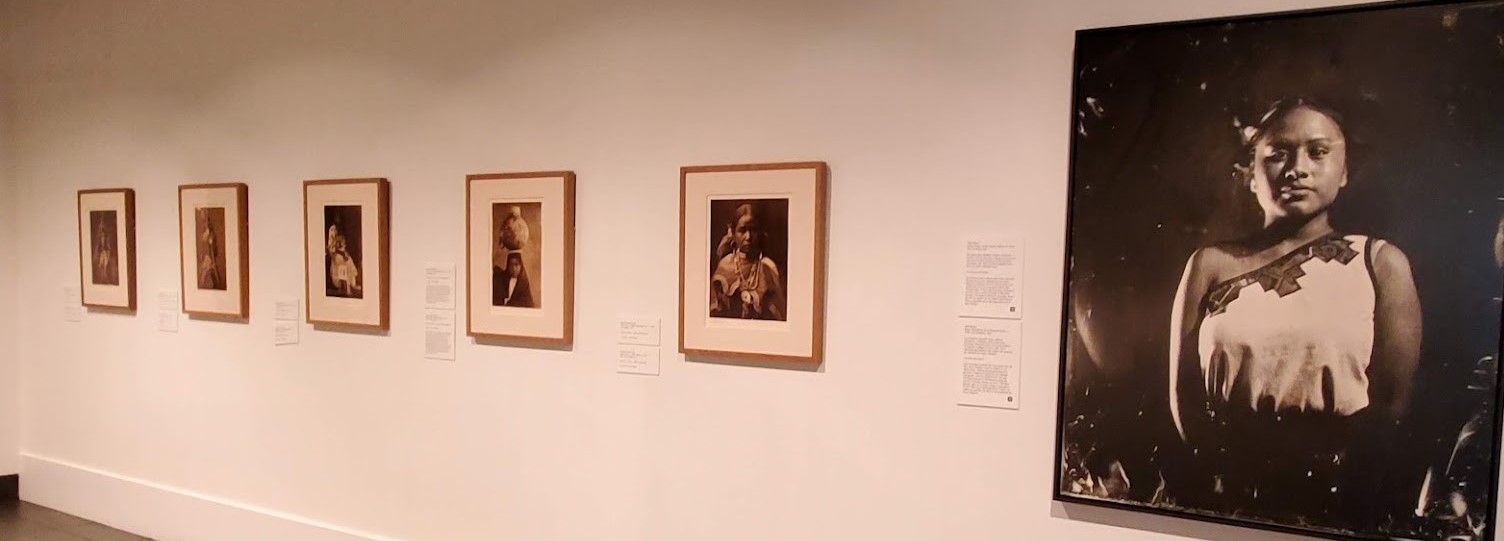
Installation view
In Conversation: Will Wilson and Edward Curtis
on through Feb 12, 2023
The special exhibition on view at the Mennello Museum of American Art in Orlando FL (through Feb 12, 2023) was curated as a dialog between the photographs of the early-20th century photographer, Edward Curtis, and 21st century Diné (Navajo) photographer, Will Wilson.
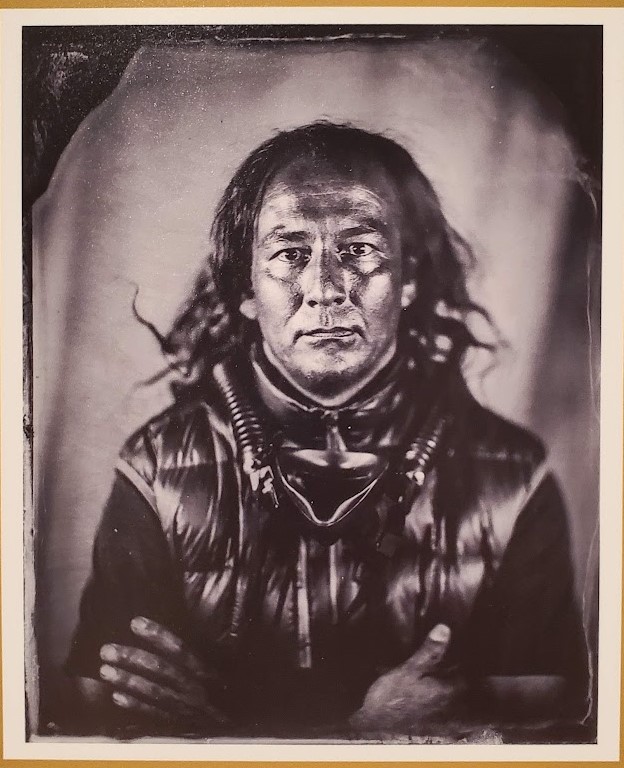
Will Wilson, Self-portrait 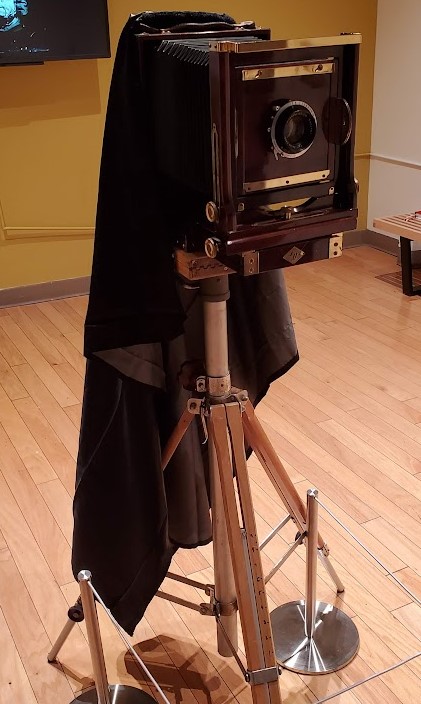
Large Format Accordion Camera 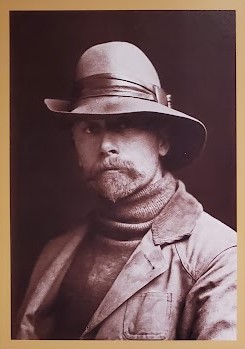
Edward Sheriff Curtis, Self-Portrait, 1899
The presentation of photographs by Wilson and Curtis in close proximity highlights the two different approaches to photographing Native peoples. Viewers are invited to think critically about how Indigenous Americans have been portrayed over the past century, and how presumptions of the past are changing.
“I want to make the case that we’re still here doing interesting and important things.” Will Wilson
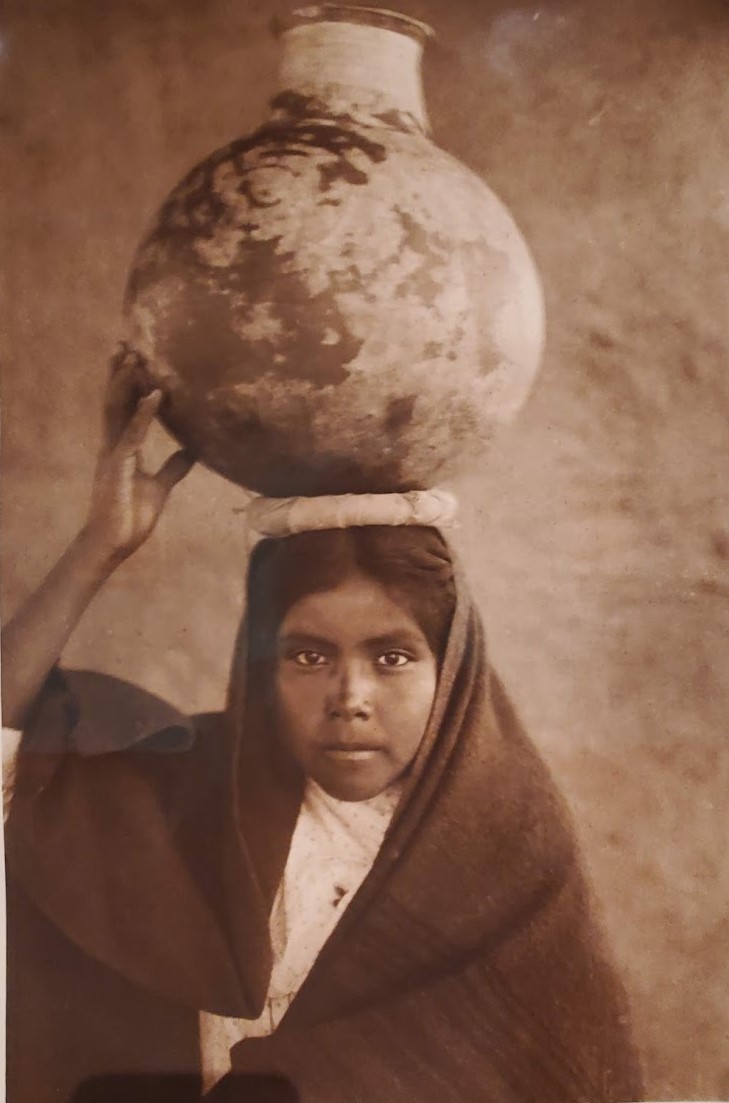
Edward Curtis, Qahatika Water Girl, 1907 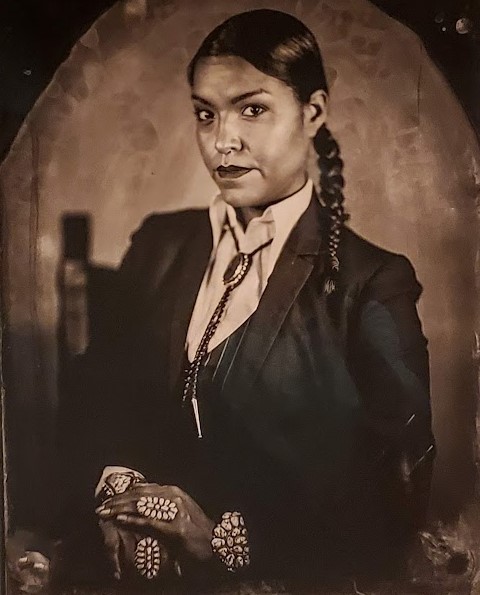
Wil Wilson, Michelle Cook, Citizen of Navaho Nation, 2013
Naturally, Curtis’ cultural sensibilities were of his time and of course they informed his work. Beautiful and fascinating, Curtis’ images romanticized Native American culture, creating archetypes rather than a documentation of reality. He frequently constructed scenes, providing “Indian props,” and carefully ensured that no examples of modern life appeared in the frame. He was known for post-production editing of his photographs through dodging, burning, cropping, and retouching elements (manual processes that can now be done in Photoshop), manipulating them as art.
It was interesting to learn that the large-format accordion camera that WiIson uses was very similar to — and actually older — than the one used by Curtis. He employs a wet-plate collodion photographic technique, based on the 19th century method. For Wilson, developing photographs of Native peoples through this process puts him in direct conversation with Curtis.
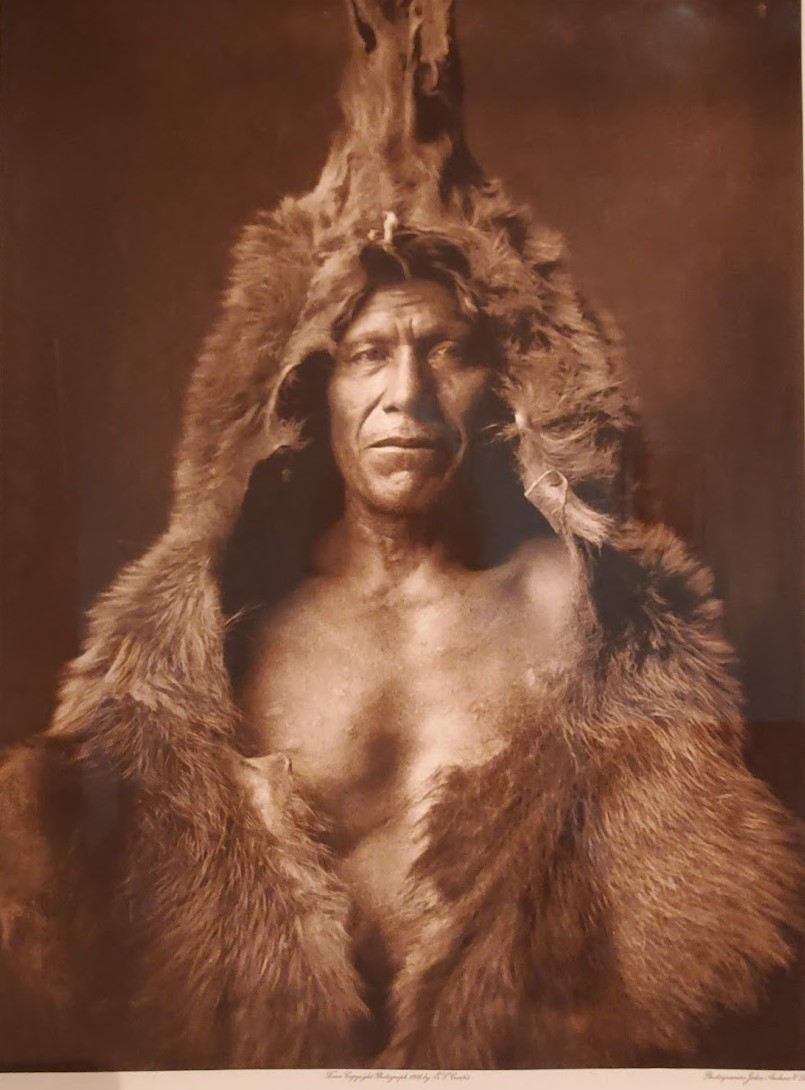
Edward Curtis, Bear’s Belly – Arikara, 1908 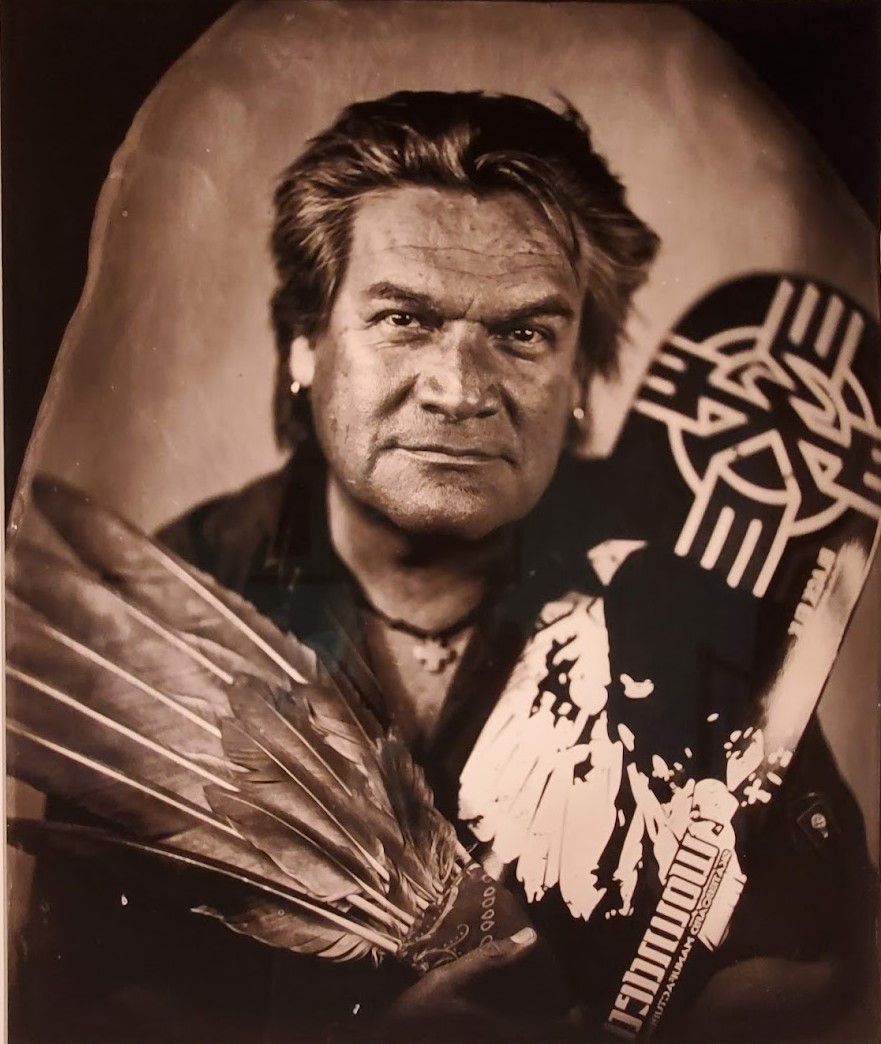
Wil Wilson, Walt Pourier, Citizen of Oglala Nation. 2013
Will Wilson employs the same tin type and sepia that captured Native Americans in the past to shatter the myths and bring them into contemporary visualization. He emphasizes a reciprocal relationship with his sitters, inviting his subjects to choose the pose, clothing, props, and context of each photograph to give them agency over all aspects of their presentation.
His collaboration with his sitters extends to giving each sitter the original photograph while retaining the rights to print and use scans for artistic purposes. Wilson’s project includes “Talking Tintypes,” which uses Augmented Reality (AR) technology to bring his portrait photographs to life. These so-called ‘talking tintypes’ animate his subjects with narratives spoken in their own voice.
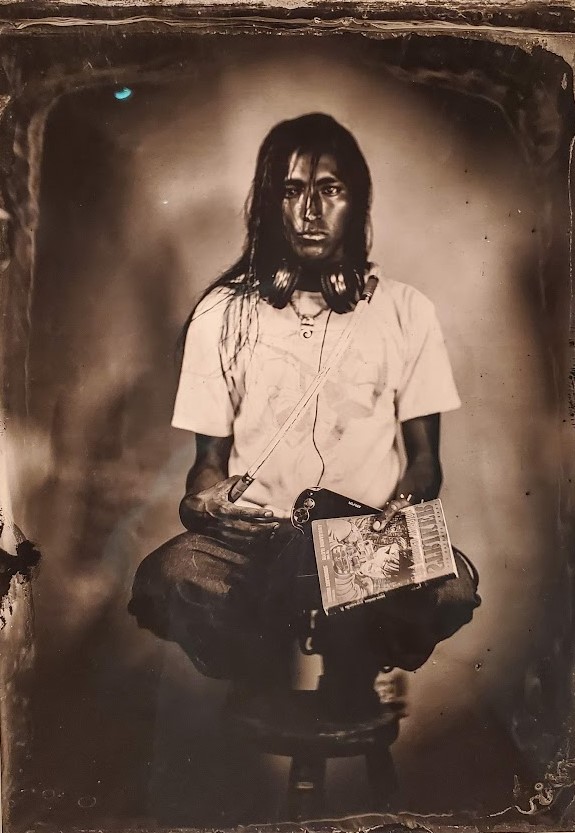
Will Wilson, Nakotah LaRance, Citizen of the Hopi Nation, 2012 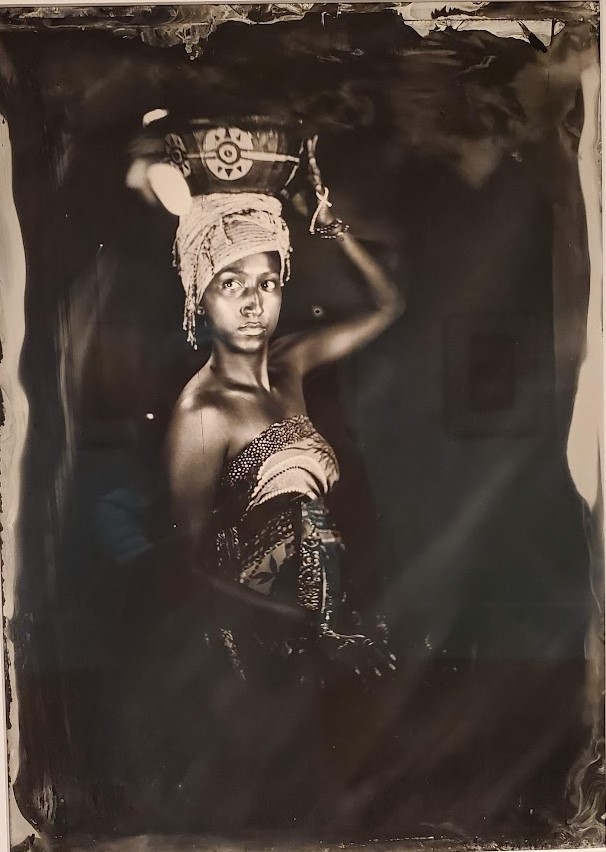
Will Wilson, Raven Knight, Citizen of the Jicarilla Apache Nation, 2013
“People don’t want to deal with the traumatic reality of history, of genocide, of attempted ethnic cleansing,” Wilson said in an interview with Native News Online. Referring to Curtis’ photographs, he continued, “They’d rather see these noble, beautiful images of a ‘better time.’ I want to make the case that we’re still here doing interesting and important things.”
To further that intent, the text adjacent to each of WIlson’s images gives a slice of personal information about the sitter. For example, Walt Pourier, Citizen of Oglala Nation, is a graphic artist who chose to pose with a skateboard of his own design to represent both his artistry and the importance of skateboarding in his life.
Raven Knight, Citizen of the Jicarilla Apache Nation apprenticed with Dancing Earth, an organization dedicated to promoting Native values and traditions through dance. She chose to be pictured wearing South African-inspired clothing in solidarity with Indigenous peoples throughout the world.
At the time of her sitting, Michelle Cook, Citizen of Navaho Nation was a law student at the University of New Mexico. (She has had a Fulbright Fellowship to study indigenous justice and legal systems in New Zealand, has served as a Commissioner on the Navajo Human Rights Commission and is a practicing Indigenous Human Rights advocate and lawyer.)
“… we as the first Americans are here and still standing strong and walking in beauty.”
Michelle Cook, Citizen of Navaho Nation
Nakotah LaRance, Citizen of the Hopi Nation, a Six-Time World Champion Hoop Dancer, is shown squatting rather than sitting, “as if to fly into motion at any moment. The headphones, game console, and Japanese graphic novel reflect his interest in popular culture, while the hoop resting on his lap hints at his six World Champion Hoop Dancing titles.” (Nakotah LaRance went on to win 3 more hoop dancing titles and was a performer with Cirque de Soleil. Tragically, he died in 2020, at age 30, in an accidental fall. Watch a video of him dancing in the final round of the 2018 Championship)
A most accomplished woman is Casey Camp-Horinek, Citizen of Ponca Tribe of Oklahoma, is credited as “Tribal Council Woman, Leader of the Ponca Scalp Dance Society, Sundancer, Delegate to UN Permanent Forum on Indigenous Issues, Matriarch of wonderful family (grandmother, companion, mother, sister), Defender of Mother Earth.” An activist for Indigenous and environmental causes, her chosen accoutrements and pose in this portrait convey an abiding strength of purpose and Native dignity.
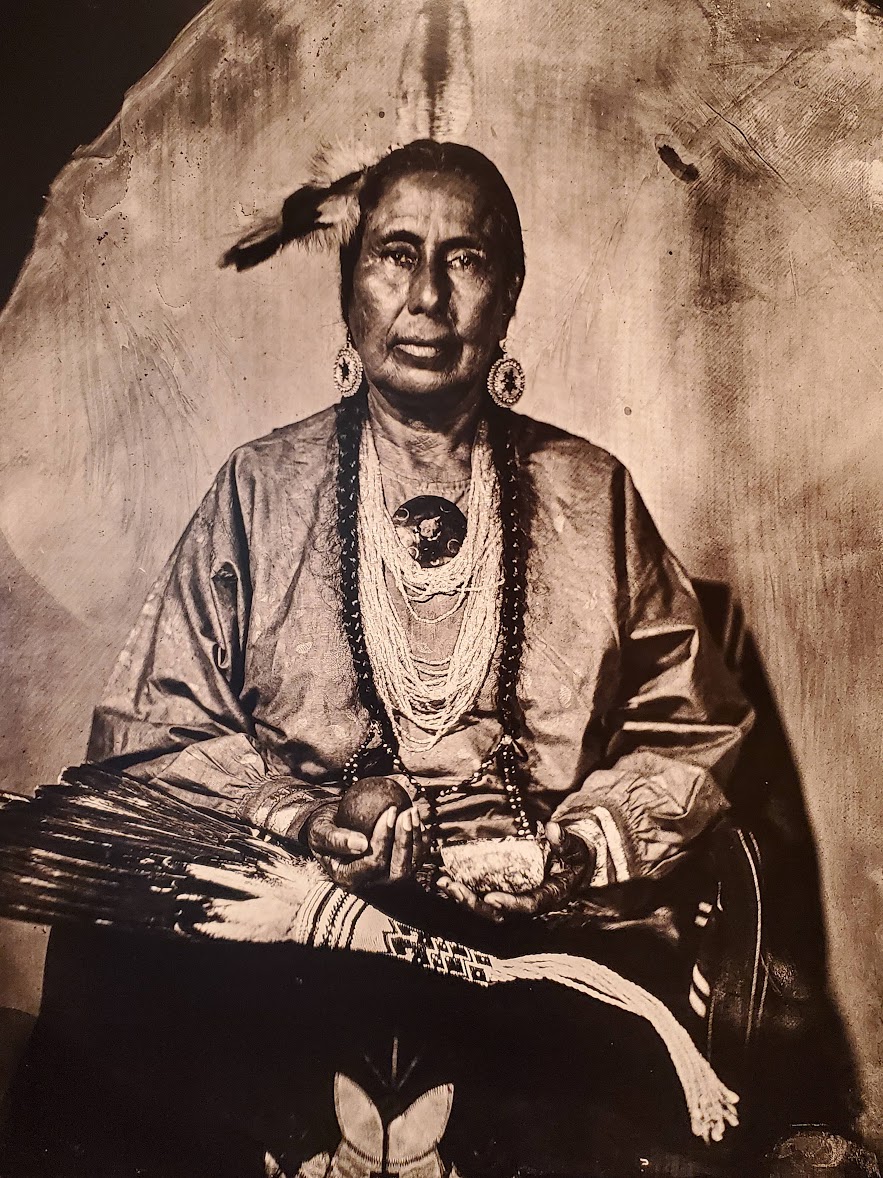
WIll WIlson, Casey Camp-Horinek, Citizen of Ponca Tribe of Oklahoma. 2016 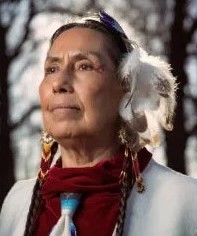
Casey Camp-Horinek, Earthworks Board Member
Finally, one engaging subtlety is the handful of non-Native “US Citizen” portraits — in a nice reversal of Curtis’ portraits — that underscores the Native Nations citizenship of Indigenous peoples. One that particularly stood out was the portrait of the Director of Events at Four Mile Historic Park, Cory Van Zytveld, U.S.Citizen. Wilson’s wet-plate and development technique results in a high level of detail that allowed him to enhance her freckles, transforming her into what he characterized as a “sort of leopard woman.”
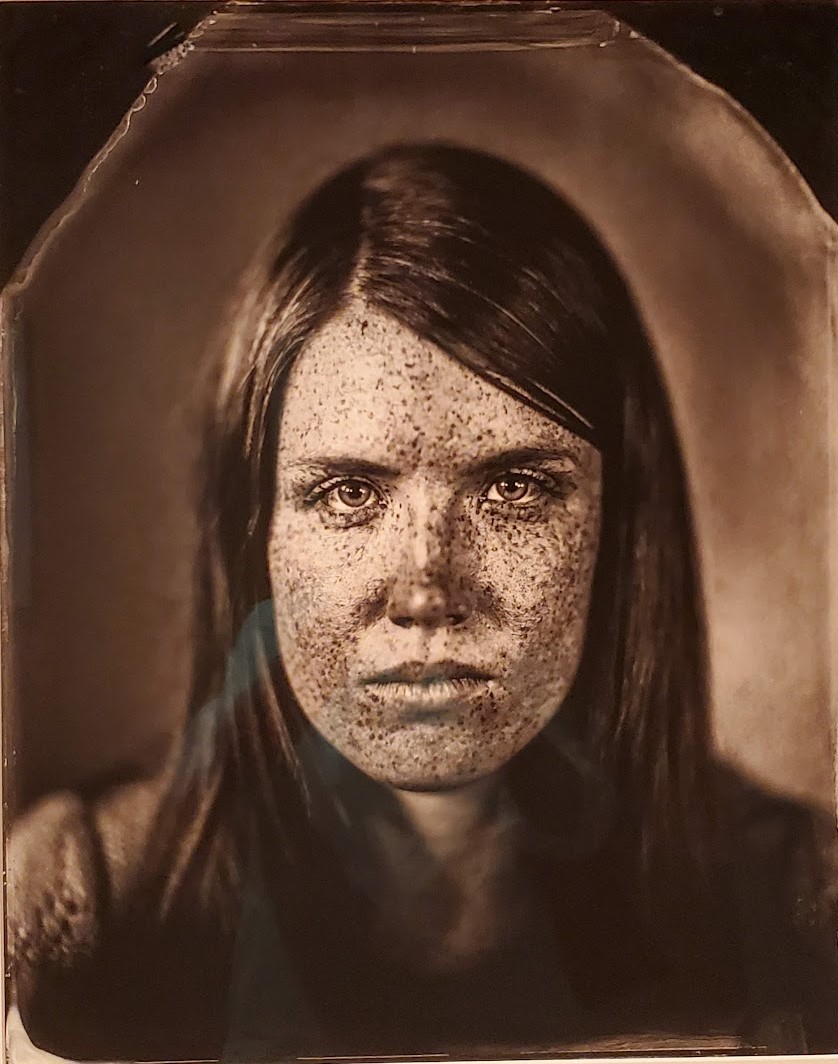
Will Wilson, Cory Van Zytveld, U.S. Citizen. 2013 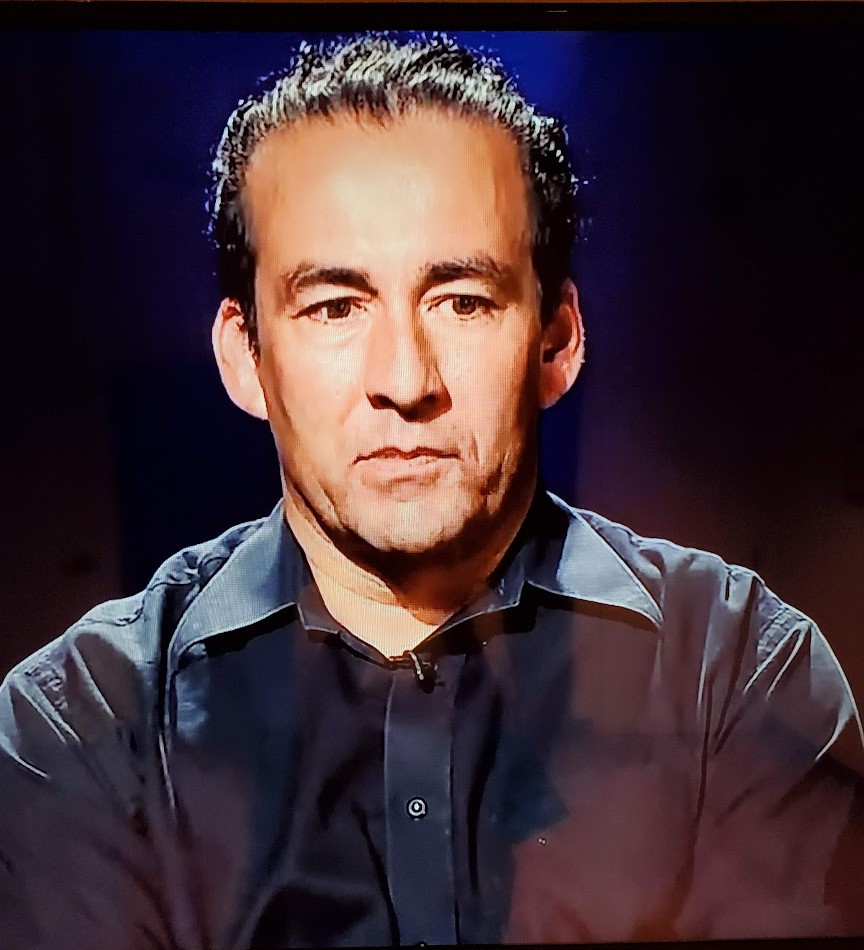
Will WIlson, screenshot from gallery video
Will Wilson’s eloquent portraits are a brilliant adjunct to Edward Curtis’ beautiful, rooted images. They demonstrate the accomplishments of real Indigenous People. Wilson’s hope for this project is that he can “indigenize the photographic exchange,” through collaboration and engagement that can then “form the basis for a re-imagined vision of who we are as Native people.”
Hmmm … maybe it’s time to plan a little trip …
Mennello Museum of American Art
900 East Princeton Street, Orlando, FL
407-246-4278
Read our review of the Mennello Museum here.
Credit for the headline image: Will Wilson (b. 1969), How the West is One, double self-portrait.
Art Things Considered is an art and travel blog for art geeks, brought to you by ArtGeek.art — the only search engine that makes it easy to discover almost 1700 art museums, historic houses & artist studios, and sculpture & botanical gardens across the US.
Just go to ArtGeek.art and enter the name of a city or state to see a complete interactive catalog of museums in the area. All in one place: descriptions, locations and links.
Use ArtGeek to plan trips and to discover hidden gem museums wherever you are or wherever you go in the US. It’s free, it’s easy to use, and it’s fun!
© Arts Advantage Publishing, 2023
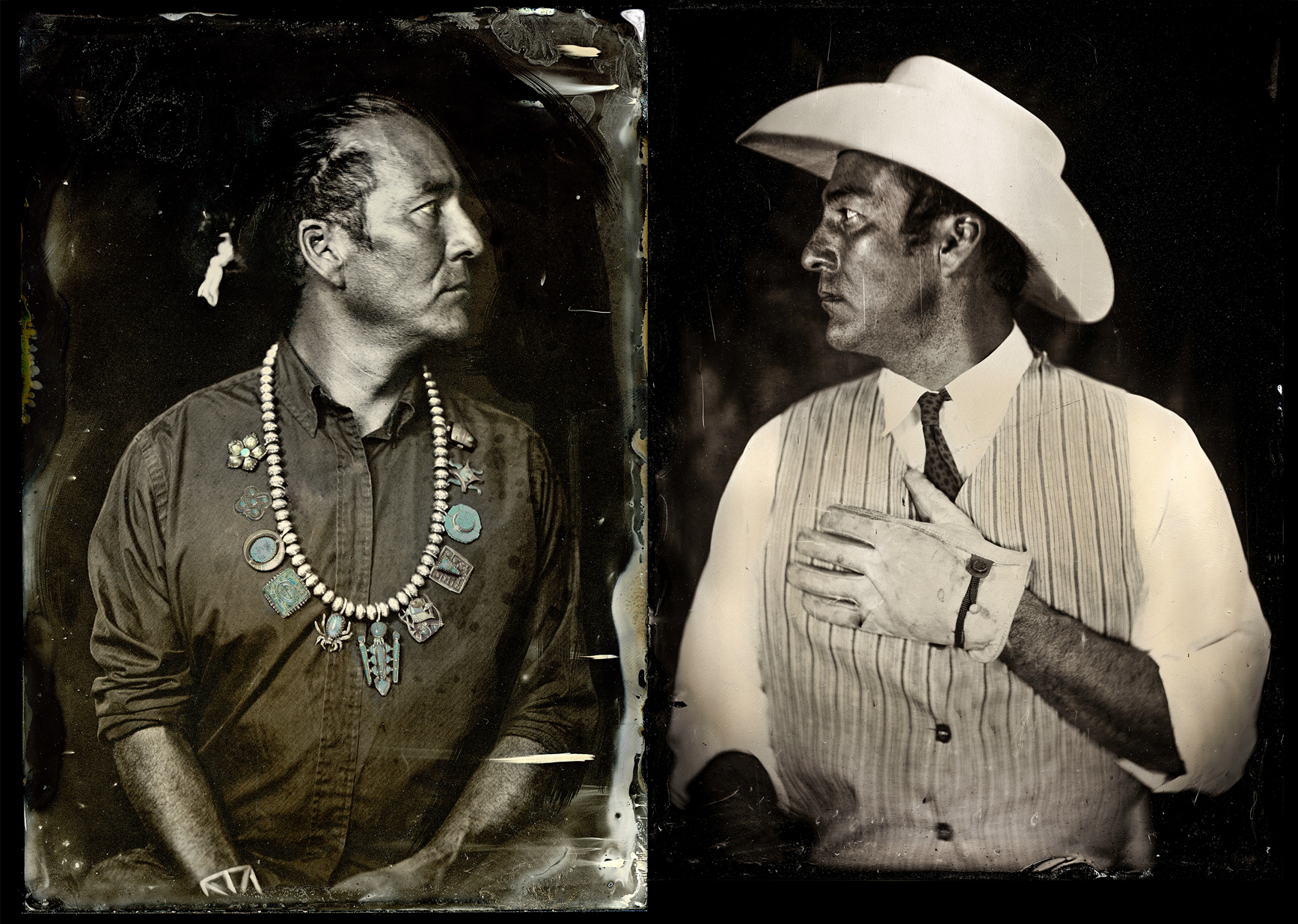
Great work!!!